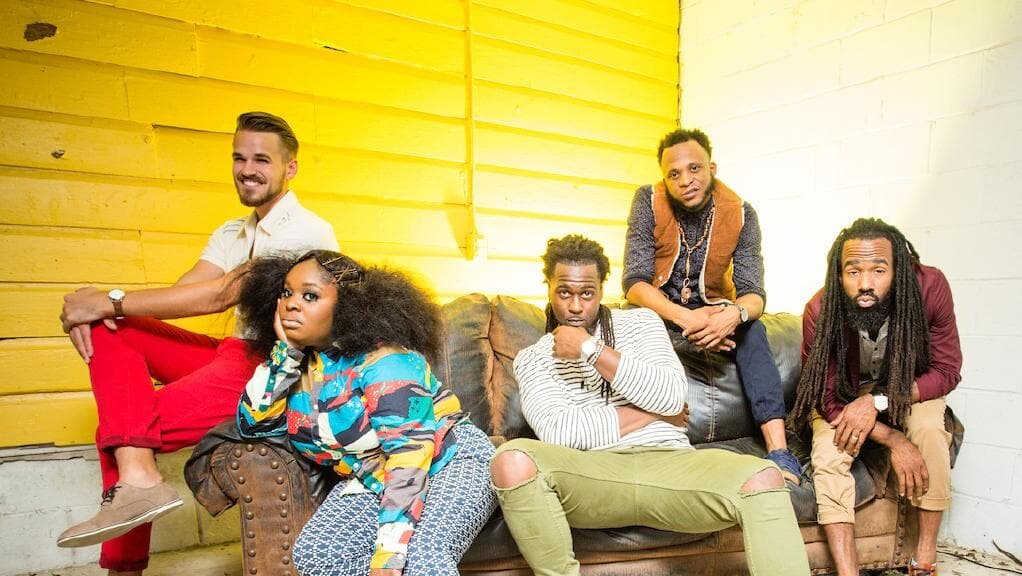Angel Olsen Lets Fans Pick Songs for Live-Streamed Show

At home with Angel Olsen, by Marisa Clogher
When Angel Olsen recently performed via live-stream, she started to address some of the performance mode’s shortcomings.
As we enter the second month of stay-at-home orders, livestreams are revealing weak spots and artists and platforms are working to adapt. Angel Olsen’s live-stream on April 11 addressed some of these blind spots and was a model for how other artists might approach their shows moving forward into the coming months.
Olsen started with a set-up conducive to having a successful livestream. She was in her living room, sitting at a piano with a working microphone and an electric guitar. The space felt properly prepared and not haphazardly thrown together. Having shows that take place in your home makes them inherently intimate, but her space was also clearly intentional for this show. She would alternate between piano and guitar, and the acoustics were surprisingly good with zero glitching the whole show.
Olsen used this opportunity to have a show that was fairly fan-controlled. She took suggestions from fans beforehand and performed a number of songs that she admitted she had either never played live or hadn’t played in many years, including “Stars” and “White Water.” She also played an earlier version of “All Mirrors”—one that she originally performed on guitar before she recorded it with synths for her most recent album. Olsen was just getting off tour from that album, All Mirrors, but she barely played anything from this album, likely because her older music is more conducive to guitar and piano treatments.
Olsen broke the tension often, making light of the awkward nature of a live-stream show. After introducing “Some Things Cosmic,” she joked, “There’s nothing harder than playing in front of no one,” and later admitted, “I had nightmares about this performance.” She checked messages on her phone in between songs, reading out messages that her friends, neighbor, and manager were sending as feedback on the show. It was funny and casual, and it felt like an intimate moment with her despite it being the most disconnected way a musician can perform.
A huge part of what made Olsen’s live-stream successful was the use of an external platform rather than Instagram or Facebook live. Many artists have taken to Instagram live for their live-stream shows, but this proves tricky and awkward on a few different fronts. Instagram wasn’t built for the way it’s now being used and because of that, live shows are glitchy with an interface that isn’t conducive to good acoustics.
Some musicians don’t have the proper equipment to perform well out of their living room, and even if they do, the show’s still reliant on a phone speaker and Internet connection to properly relay it. The shows are not very accessible and only recently became available to stream from a desktop in Instagram’s case. Instagram also doesn’t easily allow for links, which makes it harder for artists to get paid during these shows.
Olsen used an external platform, Veeps, that required a purchase of a ticket with proceeds in this case going to Olsen’s touring band and MusiCares COVID-19 Relief Fund to help artists currently out of work. Using an external site with an admission fee made the show feel like an actual commitment, something we were attending rather than simply scrolling in and out of as we’re used to doing with live content on social media. I was more inclined to stay focused and present during Olsen’s show because I paid to be there, and it existed on a site I entered for the sole purpose of listening to music. The show took itself seriously, so I took the show seriously in response.
Despite addressing some of the issues that Instagram live-streams face, the show still felt impromptu, and it didn’t quite feel like a concert. I didn’t expect it to at this stage, and for this particular moment I believe it did exactly what it should be doing: raising money for artists and connecting an artist to her fans in a particularly disconnected time. But the longer this lasts—and it will last a while—it will have to evolve. Artists will need to adapt, plan, and think more about concert planning in a live-stream world. There will need to be more focus on cohesive set lists and some sort of set design. Artists will have to shed some self-consciousness and take these shows as seriously as a live performance, putting in similar levels of thought and planning into them. These shows will continue to evolve both in technology used and show design because we’re not going anywhere any time soon.






